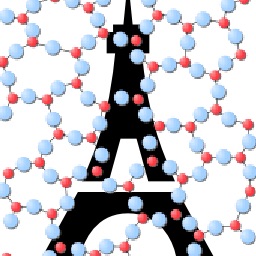Fragility and configurational heat capacity of calcium aluminosilicate glass-forming liquids
Enabling accurate prediction of the properties of aluminosilicate glasses is important for the development of new glass compositions for high-tech applications. In this study, we use a combined topological and thermodynamic approach to connect the configurational heat capacity (Cp,conf) with the liquid fragility (m) and glass transition temperature (Tg) of calcium aluminosilicate glass-forming liquids. To study structural and dynamical features of these systems, we choose two representative glass composition series: one at the tectosilicate join with varying SiO2 content and one with constant CaO content but varying Al2O3/SiO2 ratio. Cp,conf is determined using differential scanning calorimetry (DSC), while m and Tg are determined through both DSC and viscosity measurements. The Cp,conf model is found to predict the measured data well for most systems, but deviations between the modeled and measured Cp,conf values appear for the “strongest” glasses in the tectosilicate series and for the most peraluminous glasses in the constant CaO series. We discuss the structural origins of these model-from-data deviations based on Raman spectroscopy measurements.
